The Advantages of Brick Facades and Their Lighting in Modern Buildings
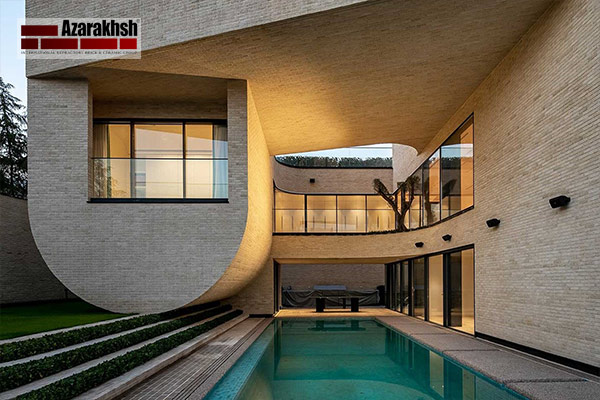
Today, building facades play a vital role in both the aesthetics and durability of structures. Among the most popular facade materials, refractory (fire-resistant) facing bricks have gained widespread attention from architects and builders alike.
In this article, we’ll explore the key benefits of brick facades and the importance of facade lighting, especially for brick-faced buildings.
Why Refractory Facing Bricks Are an Ideal Choice for Building Facades
Refractory-facing bricks offer not only aesthetic appeal but also significant technical and structural advantages. Here are the main benefits:
- High resistance to climatic conditions: Thanks to their very low water absorption, these bricks withstand rain, frost, and direct sunlight exceptionally well.
- Long lifespan and minimal maintenance: Their durability ensures lasting quality over time, reducing repair and maintenance costs.
- Variety in sizes and colors: A wide range of options allows architects to design both modern and classic facades freely.
- Seamless combination with other materials: Brick facades easily integrate with glass, stone, or composite materials to create unique and attractive exteriors.
The Role of Lighting in Enhancing Brick Facades
Façade lighting—especially for brick exteriors—has become an essential part of modern architectural design. It not only amplifies the building’s beauty at night but also offers functional advantages.
Benefits of Brick Facade Lighting:
- Creating a distinctive and elegant nighttime appearance: Proper lighting can turn a brick facade into a neighborhood or city landmark.
- Improved visibility and safety: A well-lit building is easier to spot and helps prevent accidents or security risks.
- Combining beauty and functionality indoors: When used for interior brick facades, lighting enhances both ambiance and illumination.
Key Considerations When Choosing Lighting Fixtures:
- Matching size and brightness to the building’s dimensions
- Selecting suitable colors to evoke a classic or modern feel
- Energy-efficient choices, such as using low-consumption LED lights
How to Choose the Right Lighting for Brick Facades
Brick facades are increasingly popular in modern architecture, and proper lighting enhances both their beauty and visibility—especially at night. However, lighting a brick facade requires attention to several principles and considerations that differ from lighting stone or mixed-material facades.
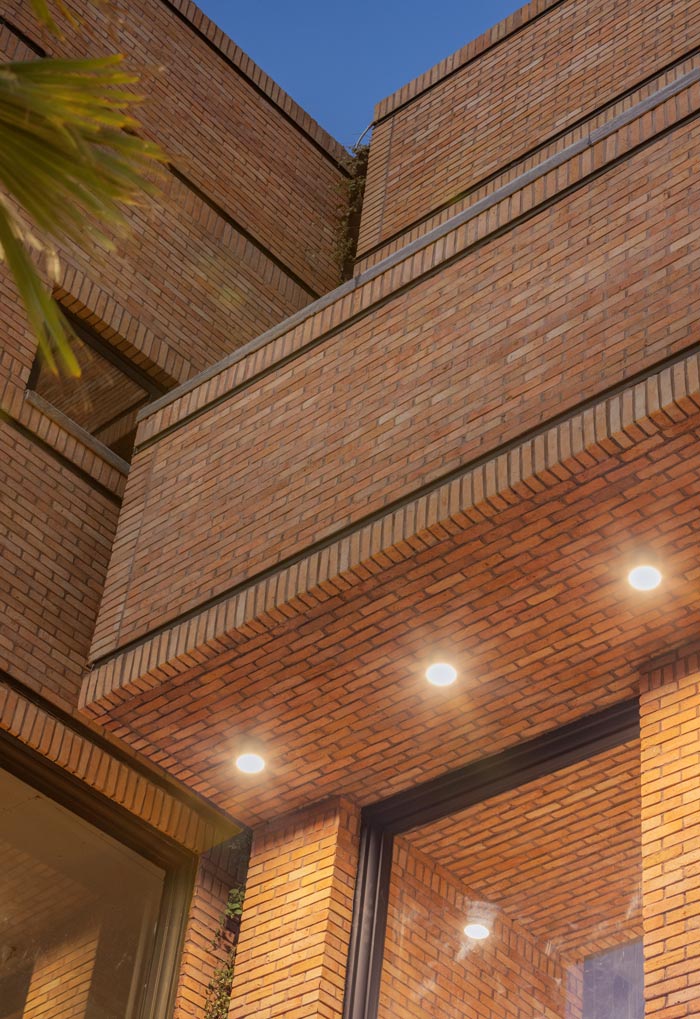
Choosing the Right Type of Brick for Facade Lighting
When planning facade lighting, it’s important to match the color temperature of the light with the tone of the bricks:
- For warm-colored bricks, use warm lighting.
- Suitable brick types for facade lighting include:
- Rustic Dutch Brick (Rustic Brick)
- English Brick
- Chamotte Brick
These types complement warm lighting and bring out the texture and color of the facade beautifully.
Key Principles of Brick Facade Lighting
Lighting a brick facade isn’t the same as lighting stone or composite facades. The following principles help achieve an effective and attractive result:
- Use wide-angle lighting to illuminate the full facade.
- Highlight window frames with targeted lights to accentuate them.
- Install lights within window wall niches, ensuring the beam stays within the window’s depth.
- Apply lighting along both vertical and horizontal facade elements.
- Illuminate columns from the bottom up to emphasize their rhythm and structure.
- Use lighting along the roofline to define the building’s height and proportions.
- Install lights along pedestrian and vehicle pathways, especially at ground level.
- Avoid using materials with high reflectivity that can cause glare, especially in busy public areas.
- Do not use high-intensity floodlights under windows to prevent light pollution and discomfort for residents.
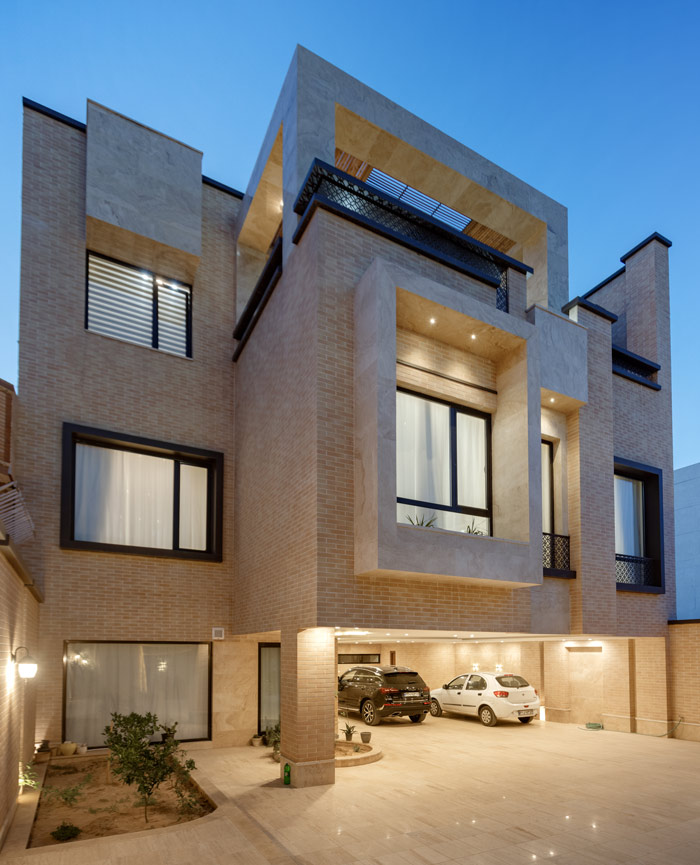
Common Brick Facade Lighting Methods
Depending on the type of brick and facade design, one of the following lighting methods is usually selected:
1. Zonal Lighting
Lighting only specific areas of the facade.
2. Background Lighting
Used mainly for small buildings and residential houses. It illuminates small sections like statues, terraces, or architectural features.
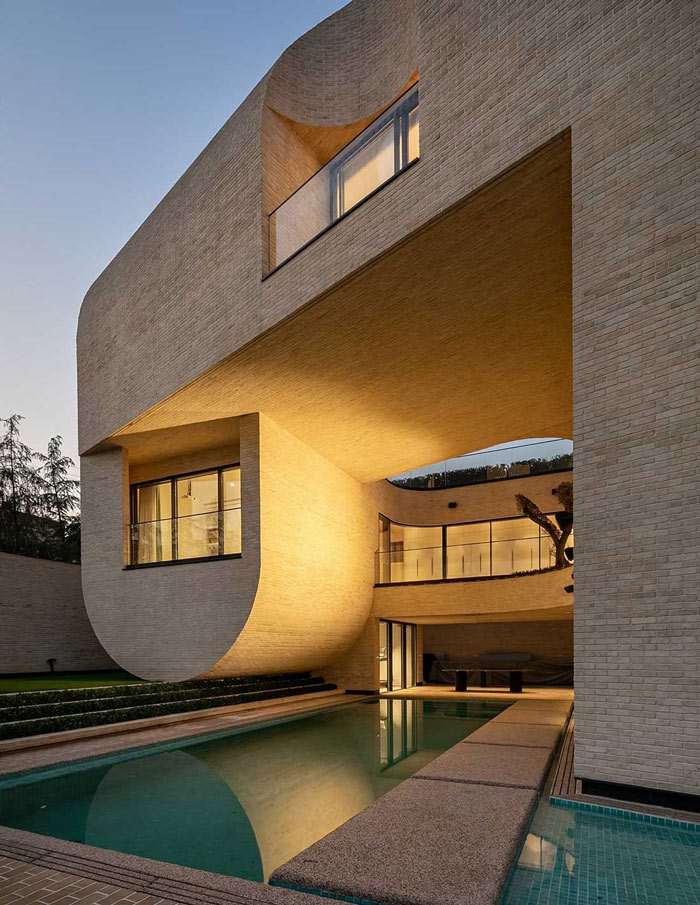
3. Full-Facade Lighting
All parts of the facade are illuminated for a uniform look.
4. Luxury or Accent Lighting
Often uses purple or golden hues to create a luxurious appearance.
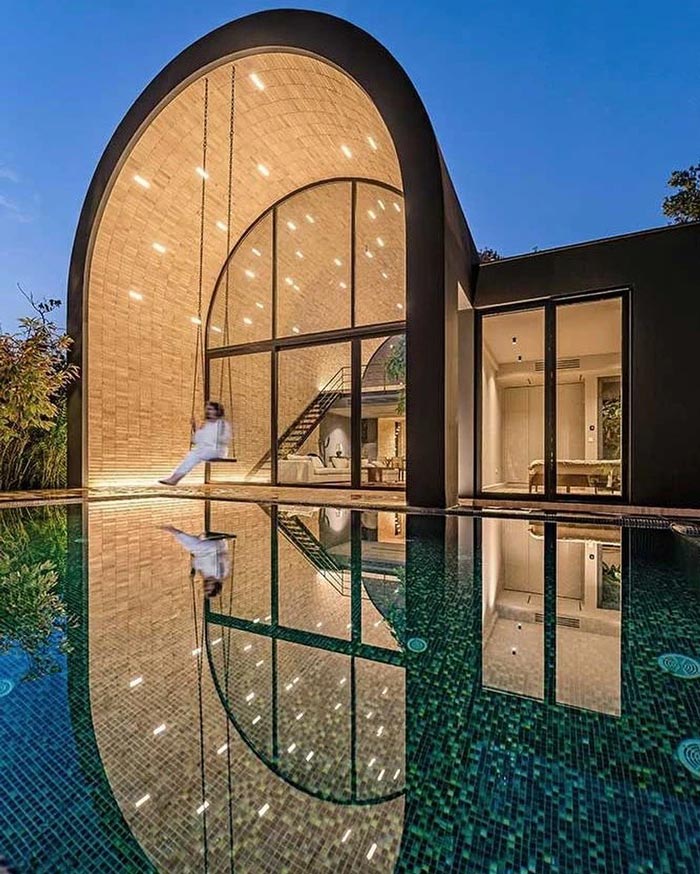
5. Static Lighting
Uses a single light tone, simple and without effects.
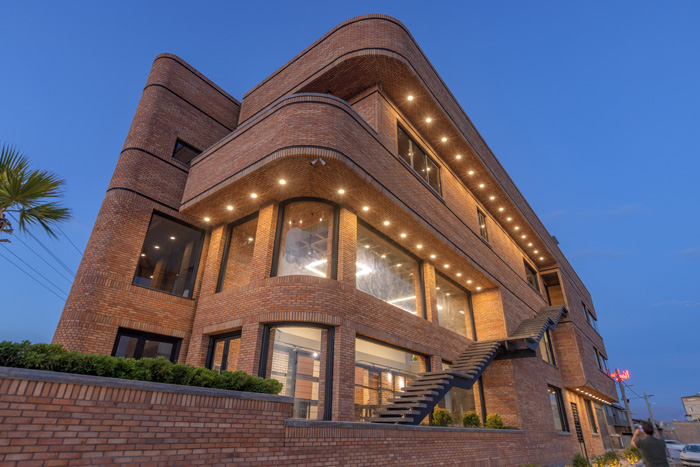
6. Dynamic Lighting
Common in commercial buildings and entertainment centers. Light intensity and colors change over time.
7. Mixed Lighting
A combination of static and dynamic lighting styles.
What Equipment Is Used for Brick Facade Lighting?
To implement any of the above methods, the following lighting equipment is typically used:
- Facade Lighting with Projectors (Floodlights)
- Facade Lighting with Wall Washers
- Facade Lighting with Linear Lights
- Facade Lighting with Jet Lights
Final Thoughts
Brick facade lighting not only enhances the visual appeal of the building at night but also highlights architectural details. It’s important to follow specific principles when designing lighting for brick facades, as these differ from stone or composite facades.
For best results, focus on illuminating key areas such as window frames, vertical and horizontal elements, and pedestrian pathways. By doing so, you create both aesthetic beauty and functional visibility.








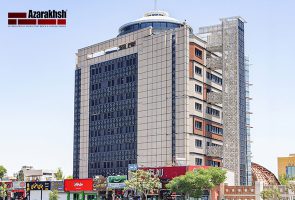

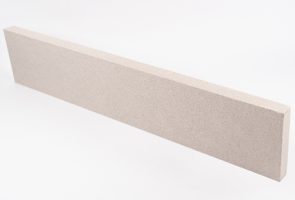
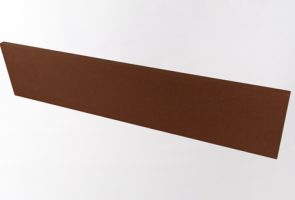

Comments
Your feedback is important to us. Please share comments or ask questions you haven’t found the answer to yet.